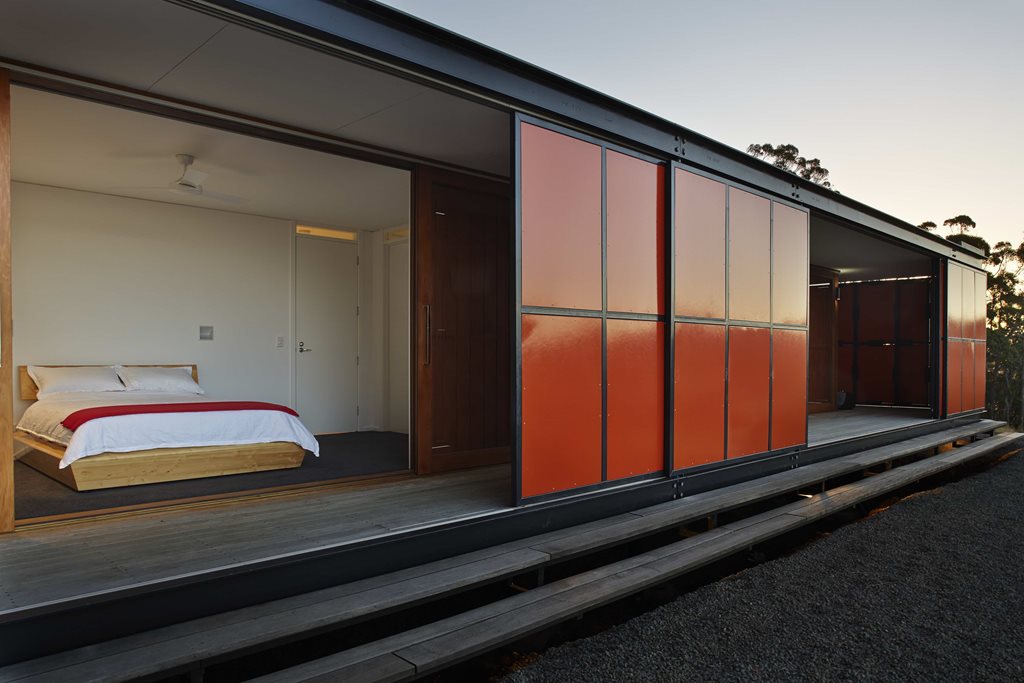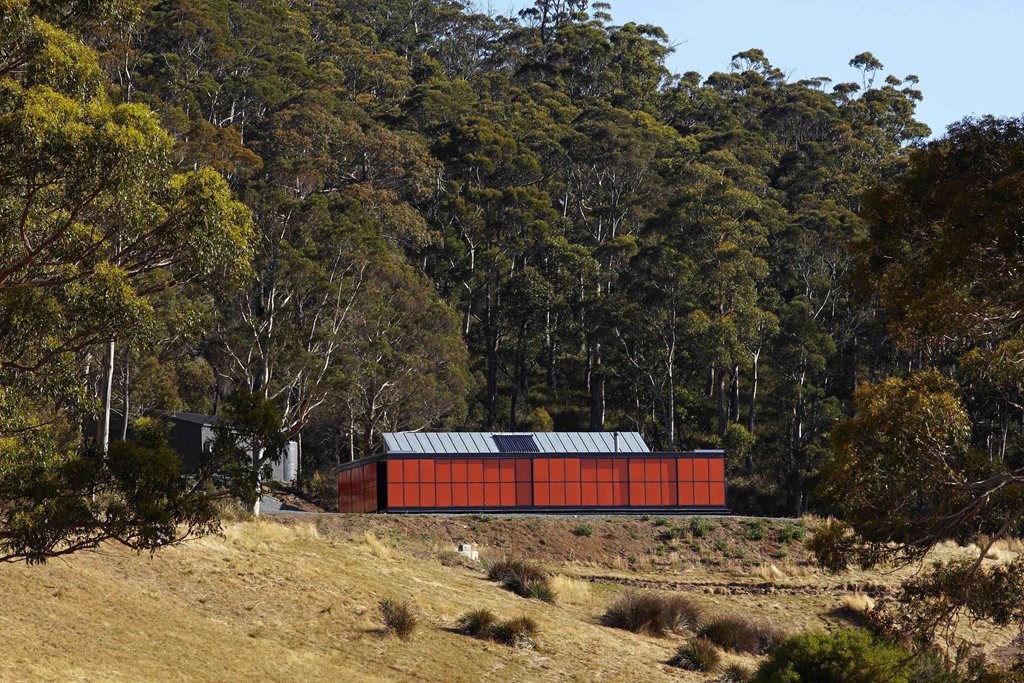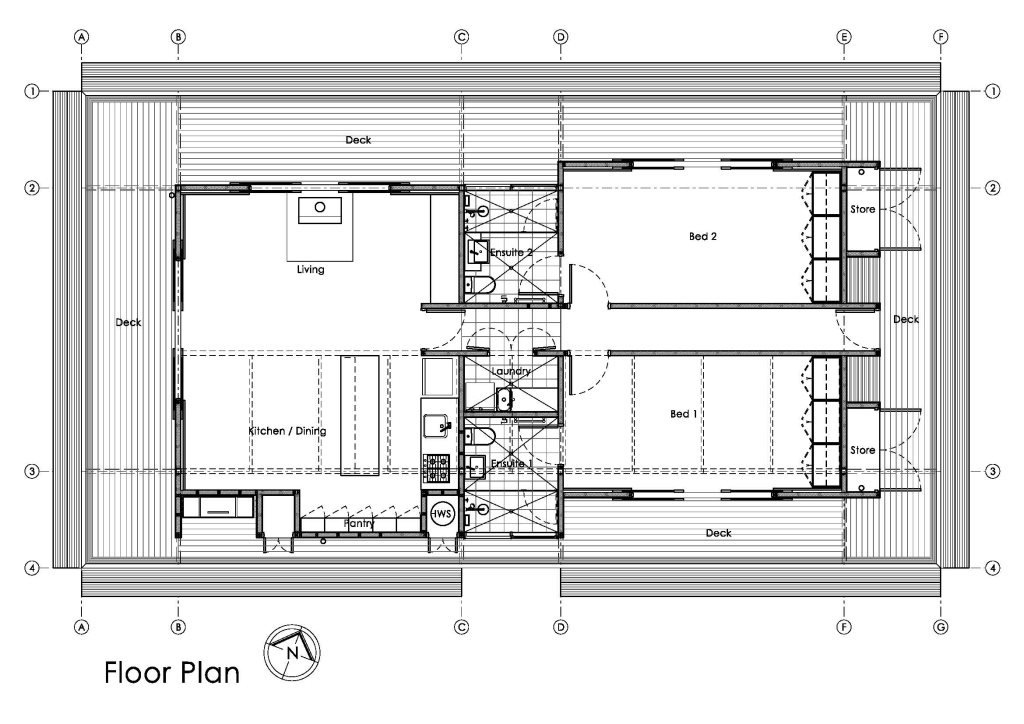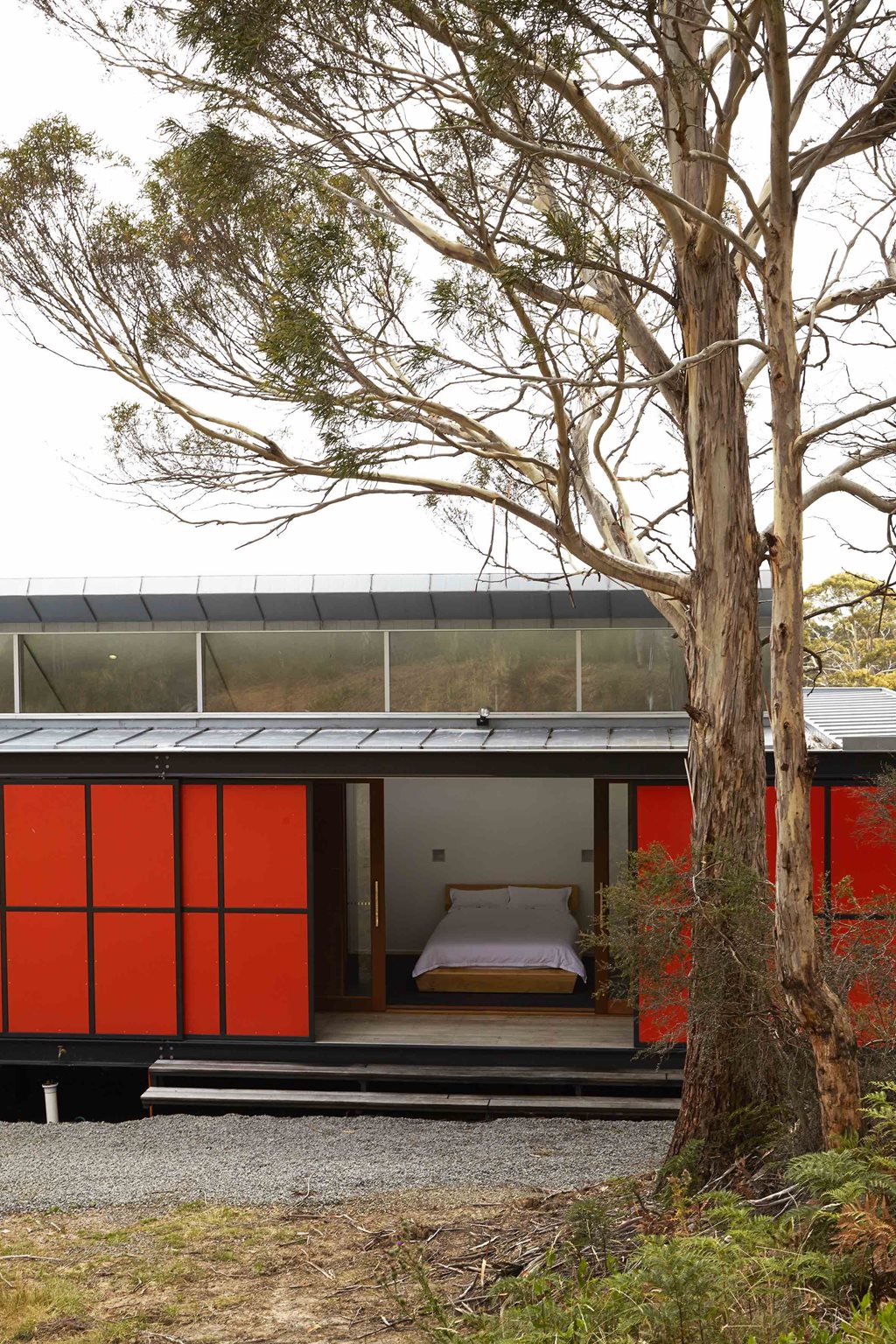With the aid of locally-produced and highly-resilient materials, Misho + Associates (M+A) have created a comfortable Tasmanian home that stands in defiance of its salty, damp and windy location. What’s more, the architects have also subdued the presence of the robust shelter by adopting some of the themes and geometries of the delicate Japanese chashitsu (tea house).
Premaydena House is located on Tasmania’s Tasman Peninsula, well-known for its mild temperatures and bustling salt-filled winds. Smack-bang in the middle of the path of the roaring forties and with average temperatures of 16-19 degrees in summer and 11-12 degrees in winter, the Tasman Peninsula has the type of climate that calls for well-insulated houses constructed from resilient materials.
To address these climatic issues, M+A surrounded the living core of the 76sqm house with an operable exterior shell of highly visible, red and orange exterior panels. The shell and core are separated by a breezeway and essential create a double skinned façade of extremely robust materials or what M+A call ‘a box within a box’.


Premaydena House boasts an insulation rating of R8 that’s bolstered by aluminium double-glazed windows, 2000mm eaves and optimized solar orientation. Photography by Peter Whyte.
The darker red steel panels on the exterior of the house designate entry points, and slide open like the screens of chashitsu to reveal a two-stage, private core. The private core also encloses a veranda which completely wraps around the internal box to reject summer sun, wind and salt moisture.


The exterior shell open and closed. Photography by Peter Whyte.
The inner modules comprise two separate cubes or ‘boxes besides a box’, one containing an open-plan living area and the other housing the two bedrooms, as requested by the clients. Large south-facing clerestory windows shed natural light and cooling breezes into the interior, even when the exterior panels are closed.



The boxes within and beside each other provide a simple, yet highly successful planning system. Areas can be easily closed off if unused and light is gained passively, even when the external panels are closed on a bright but windy day, by a set of broad clerestory windows, on the long axis. Photography by Peter Whyte.
As a result of the double façade comprising steel and local plantation-grown timber, the Premaydena House boasts an insulation rating of R8 that’s bolstered by aluminium double-glazed windows, 2000mm eaves and optimized solar orientation.
To add to is sustainability and self-sufficiency, the architect included three 10,000 litre water tanks and an Envirocycle water system that irrigates re-vegetation planting around the house. A solar tube hot water system and LED lights were also installed to minimise maintenance and energy costs.
The design of Premaydena House emulates the architect’s own home in Huon Valley, Tasmania where he says the idea behind the modules or ‘boxes’ has “allowed me to experiment with ideas in a controlled environment.”
Premaydena House was completed in 2013 and was a nominee in the 2014 Tasmanian Architecture Awards in the small project category.
PRODUCTS
STEEL
BlueScope Steel
STEEL FABRICATOR
Crisp Bros
SANITARY
Caroma
DOUBLE GLAZED WINDOWS
Glass Supplies Tasmania
TIMBER SLIDING DOORS/WINDOWS
Tasman Windows and Joinery
PLYWOOD
Carter Holt Harvey, ECOply
INSULATION
Bradford Insulation (CSR)
ZINC ROOF
HydrolSol
HOT WATER SYSTEM
HydroSol
STAINLESS STEEL GUTTER
Hill Sheet Metal Pty Ltd

